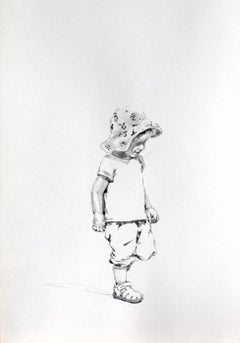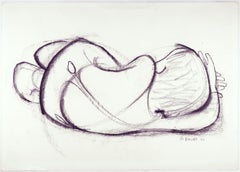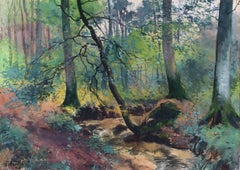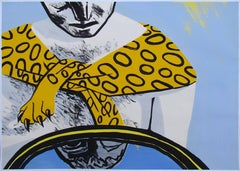Germany - Figurative Drawings and Watercolors
2010s Realist Germany - Figurative Drawings and Watercolors
Paper, Watercolor, Pencil
2010s Realist Germany - Figurative Drawings and Watercolors
Color Pencil, Paper
1990s Realist Germany - Figurative Drawings and Watercolors
Charcoal
1910s Art Nouveau Germany - Figurative Drawings and Watercolors
Watercolor
Late 17th Century Baroque Germany - Figurative Drawings and Watercolors
Handmade Paper
2010s Contemporary Germany - Figurative Drawings and Watercolors
Paper, Tempera
Early 19th Century Rococo Germany - Figurative Drawings and Watercolors
Paper
2010s Contemporary Germany - Figurative Drawings and Watercolors
Paper
2010s Contemporary Germany - Figurative Drawings and Watercolors
Paper, Ink, Tempera
2010s Contemporary Germany - Figurative Drawings and Watercolors
Paper, Spray Paint, Tempera
2010s Expressionist Germany - Figurative Drawings and Watercolors
Canvas, Color Pencil
1970s Abstract Expressionist Germany - Figurative Drawings and Watercolors
Paper
2010s Abstract Expressionist Germany - Figurative Drawings and Watercolors
Paper, Oil
2010s Expressionist Germany - Figurative Drawings and Watercolors
Canvas, Color Pencil
2010s Contemporary Germany - Figurative Drawings and Watercolors
Paper, Acrylic, Cardboard
2010s Contemporary Germany - Figurative Drawings and Watercolors
Paper, Tempera
Early 1900s Art Nouveau Germany - Figurative Drawings and Watercolors
Paper
16th Century Mannerist Germany - Figurative Drawings and Watercolors
Canvas, Oil, Handmade Paper
Ferrau FenzoniFenzoni, Painting AND preparatorial Drawing, John the Baptist, Italy Renaissance, 1590
1840s Realist Germany - Figurative Drawings and Watercolors
Paper
1950s Abstract Germany - Figurative Drawings and Watercolors
Paper
1950s Abstract Germany - Figurative Drawings and Watercolors
Paper
1840s Realist Germany - Figurative Drawings and Watercolors
Paper
1880s Realist Germany - Figurative Drawings and Watercolors
Chalk
1890s Academic Germany - Figurative Drawings and Watercolors
Cardboard, Carbon Pencil
1910s Realist Germany - Figurative Drawings and Watercolors
Watercolor
20th Century Conceptual Germany - Figurative Drawings and Watercolors
Paper, Pencil
1980s Realist Germany - Figurative Drawings and Watercolors
Paper
1880s Germany - Figurative Drawings and Watercolors
Paper
17th Century Baroque Germany - Figurative Drawings and Watercolors
Handmade Paper
Late 17th Century Baroque Germany - Figurative Drawings and Watercolors
Paper, Crayon
18th Century Romantic Germany - Figurative Drawings and Watercolors
Paper, Cardboard
18th Century Romantic Germany - Figurative Drawings and Watercolors
Crayon, Handmade Paper
2010s Contemporary Germany - Figurative Drawings and Watercolors
Paper, Color Pencil
19th Century Romantic Germany - Figurative Drawings and Watercolors
Paper
19th Century Romantic Germany - Figurative Drawings and Watercolors
Handmade Paper
2010s Abstract Expressionist Germany - Figurative Drawings and Watercolors
Paper, Oil
2010s Contemporary Germany - Figurative Drawings and Watercolors
Paper, Color Pencil
2010s Neo-Expressionist Germany - Figurative Drawings and Watercolors
Paper, Color Pencil
2010s Contemporary Germany - Figurative Drawings and Watercolors
Ink, Cardboard
2010s Abstract Expressionist Germany - Figurative Drawings and Watercolors
Paper, Oil
2010s Contemporary Germany - Figurative Drawings and Watercolors
Paper, Acrylic, Cardboard
2010s Abstract Germany - Figurative Drawings and Watercolors
Paper, Ink
2010s Abstract Expressionist Germany - Figurative Drawings and Watercolors
Paper, Oil
Early 1900s Realist Germany - Figurative Drawings and Watercolors
Paper
2010s Contemporary Germany - Figurative Drawings and Watercolors
Paper, Tempera
2010s Contemporary Germany - Figurative Drawings and Watercolors
Paper, Acrylic, Cardboard
2010s Contemporary Germany - Figurative Drawings and Watercolors
Paper, Acrylic, Cardboard
2010s Abstract Expressionist Germany - Figurative Drawings and Watercolors
Paper, Oil
2010s Contemporary Germany - Figurative Drawings and Watercolors
Paper, Egg Tempera
2010s Contemporary Germany - Figurative Drawings and Watercolors
Ink, Cardboard
2010s Contemporary Germany - Figurative Drawings and Watercolors
Paper
2010s Contemporary Germany - Figurative Drawings and Watercolors
Paper, Wax Crayon, Acrylic, Tempera
2010s Contemporary Germany - Figurative Drawings and Watercolors
Paper, Tempera
2010s Surrealist Germany - Figurative Drawings and Watercolors
Paper, Color Pencil
2010s Contemporary Germany - Figurative Drawings and Watercolors
Paper, Ink
1980s Realist Germany - Figurative Drawings and Watercolors
Paper
2010s Contemporary Germany - Figurative Drawings and Watercolors
Paper, Ink
2010s Contemporary Germany - Figurative Drawings and Watercolors
Cardboard, Ink
1990s Realist Germany - Figurative Drawings and Watercolors
Paper
2010s Contemporary Germany - Figurative Drawings and Watercolors
Ink, Paper



